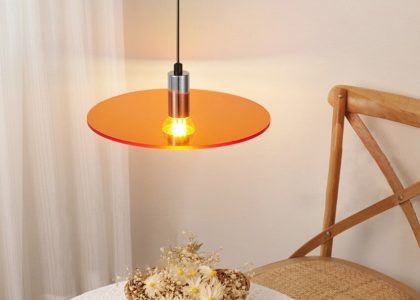Introduction
Floss Parentesi is a modern and elegant lamp designed by Achille Castiglioni and Pio Manzù in 1971. The name “Parentesi” means “parenthesis” in Italian, and it describes the unique shape of the lamp. The Floss Parentesi has become a timeless classic and is highly sought after by design enthusiasts around the world.
The Design of Floss Parentesi
The Floss Parentesi is designed to be suspended from the ceiling, which was a revolutionary concept at the time it was created. The lamp consists of a steel cable that is fixed to the ceiling and a small ceiling rose. The cable supports a telescopic stem that can be raised or lowered to adjust the height of the lamp.
At the end of the stem, there is a small cylindrical holder that holds the light bulb. The holder can be moved around the stem, which allows for different lighting angles. The Floss Parentesi is designed to be both functional and aesthetic, and it is an excellent example of Italian modernist design.
The Materials Used
The Floss Parentesi is made from high-quality materials that are designed to last. The stem is made from lacquered steel, which gives it a sleek and modern look. The holder is made from die-cast aluminum and is available in a variety of finishes, including black, white, and aluminum.
The cable is made from steel and is covered in a transparent PVC sheath. This protects the cable and gives it a polished look. The ceiling rose is made from injection-molded black thermoplastic, which provides a secure fixing point for the lamp.
The History of Floss Parentesi
The Floss Parentesi was first introduced in 1971 and quickly became a popular design object. It was awarded the Compasso d’Oro, Italy’s most prestigious design award, in 1979. The lamp has since become an iconic piece of Italian modernist design and is featured in museums and galleries around the world.
The Legacy of Achille Castiglioni and Pio Manzù
Achille Castiglioni and Pio Manzù were both influential designers and architects in Italy during the 20th century. They collaborated on several projects, including the Floss Parentesi, which was one of their most successful designs.
Castiglioni was a professor of architecture at the Politecnico di Milano and was known for his innovative approach to design. He was awarded numerous design awards during his career, including the prestigious Royal Gold Medal in 1984.
Manzù was an industrial designer who worked for a variety of companies, including Olivetti, which was one of the leading electronics companies in Italy at the time. He was known for his minimalist approach to design and his commitment to creating functional objects that were also aesthetically pleasing.
The Popularity of Floss Parentesi Today
The Floss Parentesi is still produced today and is available from a variety of retailers around the world. The lamp has become a collector’s item and is highly sought after by design enthusiasts and collectors.
The Floss Parentesi has been featured in several exhibitions at museums and galleries around the world. In 2019, it was included in the “Design Worlds” exhibition at the Philadelphia Museum of Art, which celebrated the role of design in shaping our world.
The Enduring Appeal of Italian Design
The Floss Parentesi is an excellent example of Italian modernist design, which has had a lasting impact on the world of design. Italian design is characterized by its elegant simplicity and attention to detail, which is evident in the Floss Parentesi.
Italian design has influenced many other design movements, including post-modernism and minimalism. Italian designers such as Achille Castiglioni and Pio Manzù have had a lasting impact on the world of design and continue to inspire new generations of designers.
Conclusion
The Floss Parentesi is a beautiful and functional lamp that has become a timeless classic. Its elegant design and high-quality materials ensure that it will continue to be a popular design object for years to come. The Floss Parentesi is an excellent example of Italian modernist design and is a testament to the enduring legacy of designers like Achille Castiglioni and Pio Manzù.


